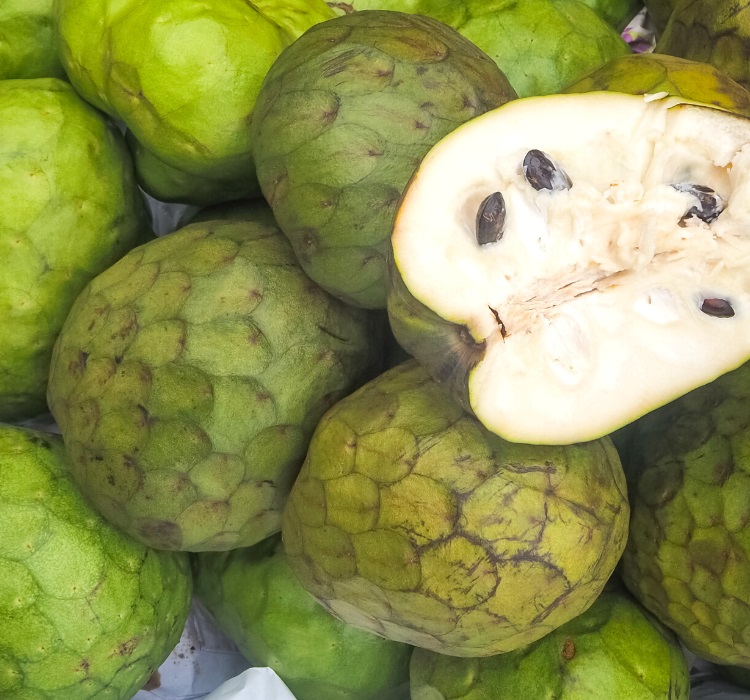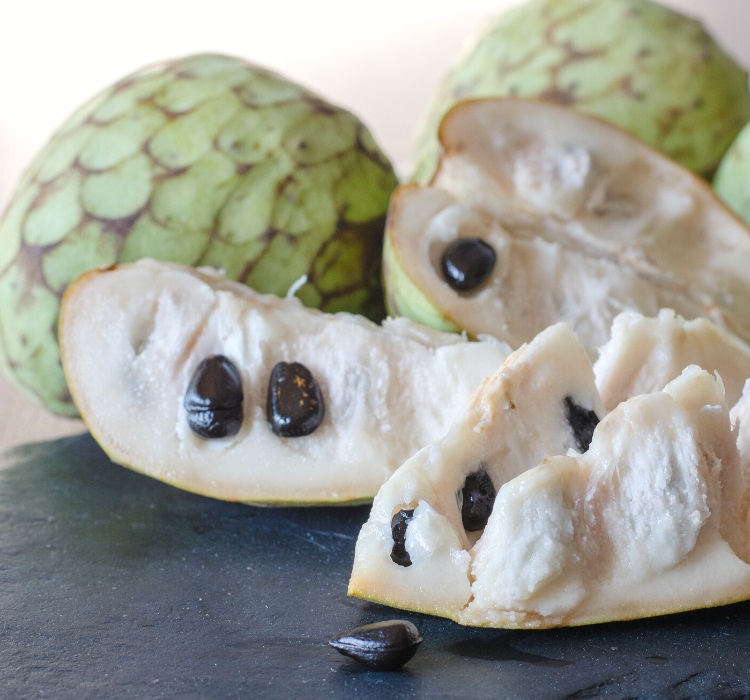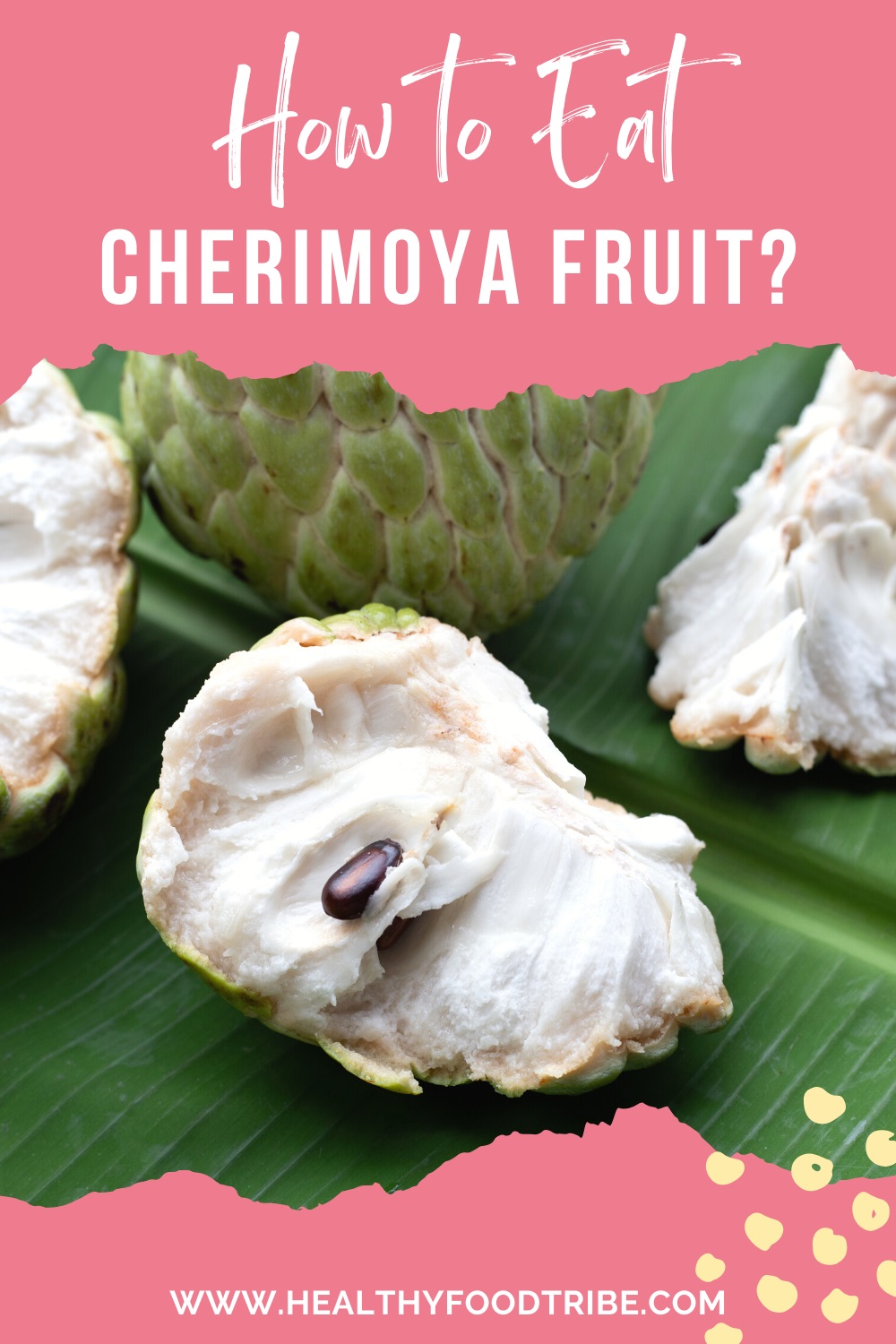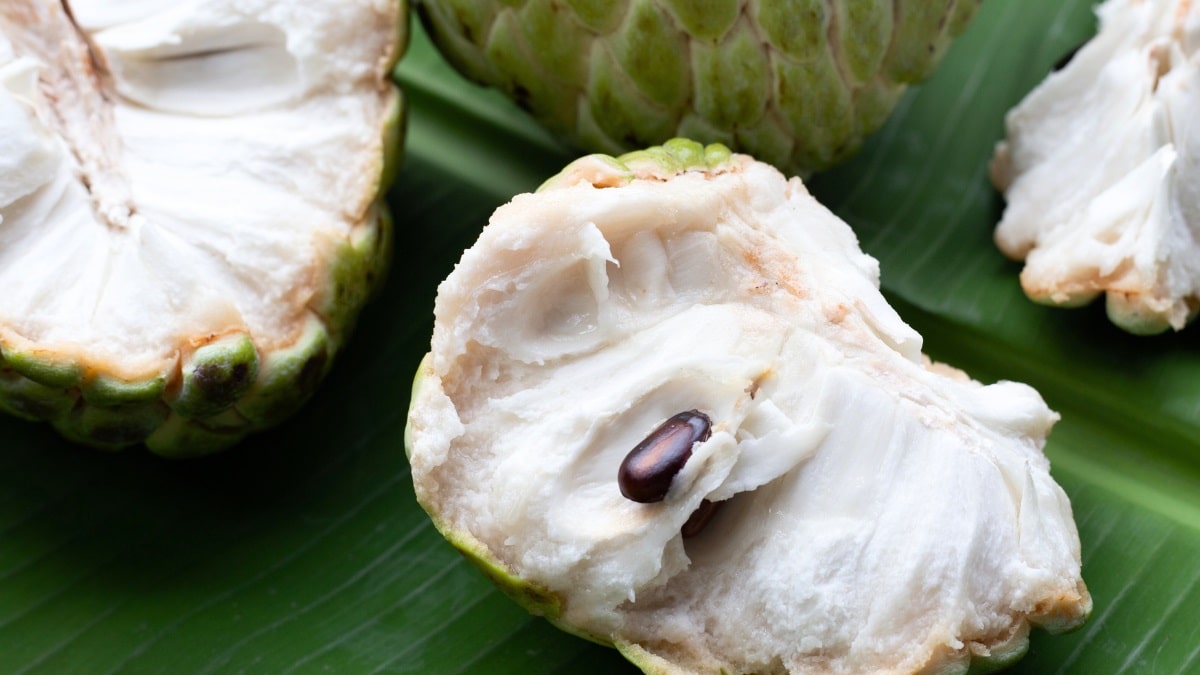Last updated: March 5, 2024
Learn how best to cut and eat cherimoyas with this step-by-step guide, plus handy recipe tips for this delicious fruit.
With a scaley rind, large poisonous seeds, and an imperfect shape, you’d never know the cherimoya is one of the tastiest fruits in the world. In fact, according to Mark Twain, it is the most delicious fruit known to man.
If you’ve recently gotten a hold of a rare cherimoya and are excited to put that claim to the test, I’m here to help.
Read on, as I am going to show you how to eat cherimoya fruit using my simple method. I will also give you some great tips for savoring that unique flavor in various recipes.
How to Eat Cherimoyas
Cherimoyas are native to South America, specifically Ecuador and Peru.
Their delicious flavor, like fragrant pineapple bubble gum with hints of strawberry and papaya, has led to them being cultivated throughout the tropics. Although, it is still hard to find these fruits if you don’t know where to look.
In addition to their unique flavor, they also have a unique texture.
The white flesh inside is soft, like a mix between a ripe peach and custard. This is where their common name, custard apple, comes from.

Steps to Eat
Follow these steps to cut and eat a raw cherimoya fruit:
- Use a large, sharp knife to cut the fruit in half along the stem axis.
- Using a fork, gently remove all visible seeds.
- Use the same fork to slowly remove the edible flesh, eating as you go.
- Continue removing seeds and eating the custardy flesh until finished.
If you want to use cherimoya in a recipe instead of eating it straight out of the peel, simply scoop the sweet flesh into a bowl or container. Be sure to separate the seeds and discard them somewhere where pets won’t find them. Check out some of my cherimoya recipe ideas further below.
Note:
If the flesh is not easy to dig through, your fruit was not ripe enough. For less ripe fruits, it will be easier to slice it up, similar to how you would an apple, removing the seeds as you go. The fruit won’t be as good, but as long as it’s a little ripe, it will still be sweet and flavorful.
Pick a Ripe Cherimoya to Eat
It’s important to find a cherimoya that is ripe. If you eat an unripe fruit, which is easy to do in the States as this is how they’re shipped, you’ll be disappointed by the flavor and texture.
Signs of a ripe cherimoya include:
- Dull green or green-yellow skin with brown along the ridges.
- Feels soft when palpated, like a ripe avocado or pear.
- The stem falls off with the slightest touch.
- When you cut into the fruit, the flesh will be very soft and slightly yellow or brown (not pure white).
If you end up with an unripe fruit, don’t cut it open. Place it on the counter and wait a few days for it to show the proper signs of ripeness.
Skin and Seeds
While cherimoyas have a somewhat heart-shaped apple look, that’s about as far as the similarities go.
The skin on this odd fruit ranges from smooth with finger-print like markings to ribbed with scale-like bumps, to straight-up lumpy depending on the variety.

The green peel, which is about as thick as a mango peel, is not edible, nor are the seeds inside.
In fact, the many black seeds hidden in the flesh contain neurotoxins that make them toxic to humans and animals. Luckily, it is very easy to prepare and eat cherimoya without consuming the seeds.
Recipe Tips
Because of its smooth, custardy texture, most recipes that feature cherimoya call for it to be blended, rather than cut up as other fruits are typically used.
These recipes take advantage of both its texture and sweet flavor to give the dish a rich smoothness and fragrant flavor.
Some of my favorite ways to use custard apples include:
Ice Cream
Cherimoya makes for an easy flavor additive to your favorite ice cream base. You can even mix the pulp with avocado and agave to make a delicious vegan cherimoya iced treat, like this recipe.
Smoothies
The creamy texture of this fruit makes it a perfect additive to your morning smoothie. Or, use your blender to create delicious and creamy cherimoya custard pudding with vanilla almond milk.
Savory Latino Dishes
Cut cherimoya fruit into slices and prepare it with some lime juice and chili powder. The sweetness with the added sour and spice pairs well with fish tacos, shrimp, fajitas, and pretty much anything else you’d put mango salsa on.
Cold Soup
If you like summer fruit soups, try adding some custard apple into the mix. A few scoops of cherimoya in any apple or tropical fruit-based cold soup will work well.
Parfaits
Mixing this creamy fruit with your morning yogurt is a great way to add some unexpected flavor. It pairs well with vanilla, honey, and fruit-flavored yogurt.
Cocktails
You can substitute cherimoya in any cocktail recipe that uses mango, papaya, or pineapple puree. It offers a more delicate, fragrant flavor with an appeal all its own.
While you might be in a hurry to cut open your fruit and put it to use in one of these recipes, remember, the best cherimoyas are those that have been allowed to fully ripen.
And, since these tropical gems tend to cost a pretty penny to get in the States ($7 to $11 each), it’s worth being patient so you can savor every cent’s worth!

